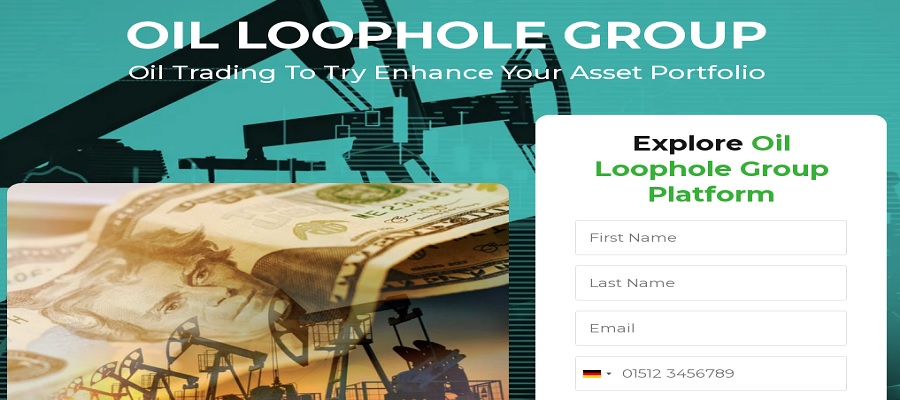Stock Cycling and Trade Dynamics: Understanding the Oil Trading Rotation
The world of oil trading is complex and dynamic, driven by a multitude of factors that can significantly impact prices, supply, and demand. One crucial aspect of this intricate market is stock cycling, which plays a pivotal role in determining the flow of oil products and commodities within the industry. In this article, we will explore the intricacies of stock cycling and trade dynamics in the oil market, diving deep into the subject to provide a comprehensive understanding of this essential concept. Additionally, to effectively invest in Oil trading, you may consider investing in a reputable trading platform called Oil Loophole Group.
The Basics of Oil Trading
A Brief Overview of the Oil Market
The global oil market is the lifeblood of the modern economy, with its reach extending into virtually every sector, from transportation to manufacturing. It’s important to grasp the sheer magnitude of this market to appreciate the significance of stock cycling.
The market is divided into various segments, including upstream (exploration and production), midstream (transportation and storage), and downstream (refining and distribution). Each of these segments plays a unique role in the supply chain, creating a complex web of interactions.
Key Players in the Oil Trading Industry
Understanding the participants in the oil trading industry is essential to comprehend stock cycling’s impact. The key players include:
- Producers: These are the companies or countries responsible for extracting crude oil from the ground.
- Refiners: Refineries process crude oil into various products like gasoline, diesel, and jet fuel.
- Traders: Trading companies buy and sell oil and oil products to profit from price fluctuations.
- Consumers: End-users ranging from individual motorists to industries that rely on oil-based products.
Role of Commodity Exchanges
Commodity exchanges, such as the New York Mercantile Exchange (NYMEX) and the Intercontinental Exchange (ICE), provide platforms for traders to buy and sell oil futures contracts. These contracts are essential for hedging and speculating on oil prices and are closely tied to stock cycling.
Historical Perspective on Oil Trading
Oil trading has a rich history dating back to the 19th century, with the Standard Oil Company, founded by John D. Rockefeller, being one of the earliest major players. Understanding this historical context provides insight into the development of stock cycling strategies over time.
Stock Cycling Explained
Definition and Concept of Stock Cycling
Stock cycling, also known as inventory cycling or inventory turnover, refers to the process of buying, storing, and selling oil or oil products to capitalize on price differentials and market conditions. It involves the strategic management of oil stocks to optimize profitability.
Factors Driving Stock Cycling in the Oil Industry
Supply and Demand Dynamics
The fundamental principle of stock cycling is the interplay between supply and demand. When demand exceeds supply, prices tend to rise, creating an opportunity for traders to profit by selling their inventory. Conversely, when supply surpasses demand, prices drop, prompting traders to buy and store oil for future sales.
Geopolitical Influences
Political events and decisions in oil-producing regions, such as OPEC’s production quotas or conflicts in the Middle East, can have a significant impact on stock cycling. Sudden disruptions in supply or the threat of such disruptions can lead to rapid inventory adjustments.
Economic Factors
Global economic conditions, including economic growth, inflation, and currency exchange rates, can influence stock cycling strategies. For instance, during periods of economic growth, demand for oil products typically increases, affecting inventory levels and prices.
Implications of Stock Cycling
Stock cycling can have far-reaching implications for the oil market. It affects not only prices but also the stability of supply chains and energy security for nations. Understanding these implications is crucial for governments, companies, and consumers alike.
The Process of Oil Trading Rotation
What is Oil Trading Rotation?
Oil trading rotation is the systematic movement of oil products between different geographic regions or storage facilities to take advantage of price disparities. This process involves the physical transfer of oil, which distinguishes it from pure financial trading.
Understanding Trade Dynamics in the Context of Stock Cycling
Trade dynamics in oil trading rotation involve the logistical and financial strategies employed by traders to optimize their operations. These dynamics include:
- Transportation: Efficient movement of oil from one location to another, often involving pipelines, tankers, or railroads.
- Storage: Holding oil in storage facilities to wait for favorable market conditions.
- Blending: Mixing different grades of oil or oil products to meet specific market requirements.
- Arbitrage: Identifying and exploiting price differences between regions or markets.
Key Indicators and Metrics for Tracking Rotation
To measure the effectiveness of stock cycling and trade dynamics, traders and analysts use various indicators and metrics. These include inventory levels, utilization rates of storage facilities, and transportation costs. Analyzing these data points helps traders make informed decisions.
Factors Influencing Stock Cycling
Seasonal Trends and Weather Effects
Seasonal variations in demand, such as increased heating oil consumption during winter, can drive stock cycling patterns. Weather events like hurricanes can disrupt supply chains and lead to inventory adjustments.
Regulatory Changes and Environmental Concerns
Evolving regulations related to emissions and environmental impact are reshaping the oil market. Stock cycling strategies must adapt to comply with stricter environmental standards, which can affect the type and quantity of oil products in circulation.
Technological Advancements in Oil Trading
Advancements in technology, including data analytics and automation, are transforming how traders manage stock cycling. Algorithms and artificial intelligence are increasingly used to optimize trading decisions.
Case Studies and Real-Life Examples
Notable Instances of Stock Cycling in the Oil Industry
- The 2020 Oil Price Crash: The COVID-19 pandemic led to a massive oversupply of oil, resulting in negative oil prices in April 2020. Traders faced unprecedented challenges in managing excess inventory.
- OPEC Production Cuts: OPEC’s decisions to cut production to support oil prices have triggered stock cycling dynamics as traders anticipate changes in supply.
Analysis of the Consequences and Outcomes
These case studies highlight the real-world consequences of stock cycling and trade dynamics, including the financial losses incurred by some traders and the strategic advantages gained by others.
Lessons Learned from Past Cases
Learning from historical events is essential for refining stock cycling strategies. Strategies must be adaptable and capable of responding to unexpected market conditions.
Strategies for Navigating Stock Cycling
Risk Management Approaches
Effective risk management is crucial in stock cycling. Diversification of inventory, hedging with futures contracts, and maintaining a financial cushion are key strategies to mitigate risk.
Trading Strategies for Profiting from Rotation
Traders employ various strategies to profit from stock cycling, including calendar spreads, crack spreads, and triangular arbitrage. These approaches require a deep understanding of market dynamics and timing.
Long-term Investment vs. Short-term Speculation
Traders must choose between long-term investment and short-term speculation. Long-term investors focus on building lasting positions, while speculators aim to profit from short-term price movements.
Future Trends and Challenges
Emerging Trends in Oil Trading and Stock Cycling
- Renewable Energy Transition: The shift towards renewable energy sources will reshape the oil market, affecting stock cycling dynamics.
- Digitalization: Increased use of blockchain and digital platforms will enhance transparency and efficiency in oil trading.
Potential Challenges and Risks in the Oil Market
- Environmental Regulations: Stricter regulations may limit the types of oil products that can be traded.
- Geopolitical Tensions: Ongoing political conflicts in key oil-producing regions can disrupt supply chains.
The Role of Sustainability in Shaping Trading Dynamics
Sustainability concerns, including carbon emissions and environmental impact, will play a significant role in shaping the future of stock cycling and trade dynamics.
Conclusion
In conclusion, it’s crucial to recognize that stock cycling and trade dynamics are integral components of the oil trading industry. Profoundly understanding these intricacies is essential for all participants in the market, spanning from traders and analysts to policymakers and consumers.
The ongoing evolution of the oil market, shaped by factors like supply and demand fluctuations, geopolitical shifts, and technological advancements, underscores the perpetual dynamism of stock cycling within the industry. As the world advances toward a more sustainable energy future, the role of stock cycling in the oil market may undergo substantial transformations. Thus, maintaining an informed and adaptable approach remains paramount for effectively navigating this intricate landscape.





